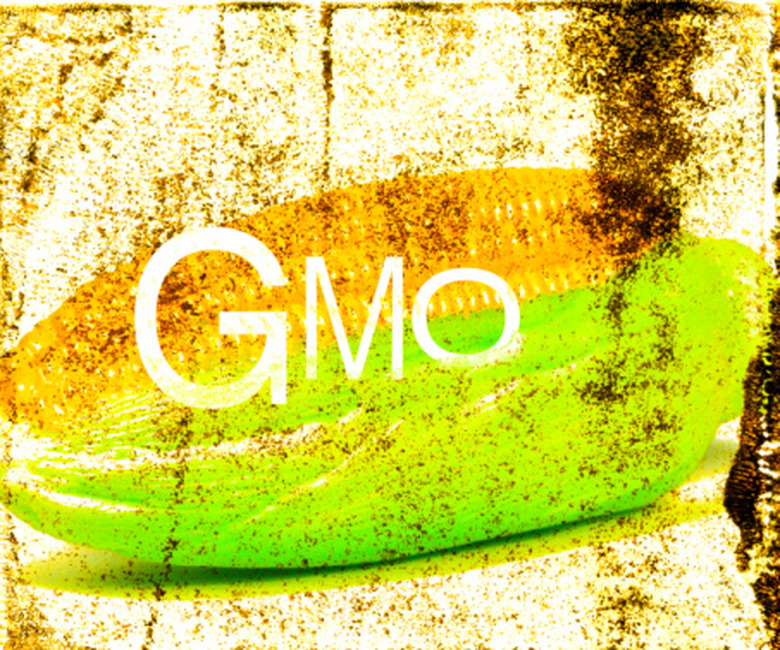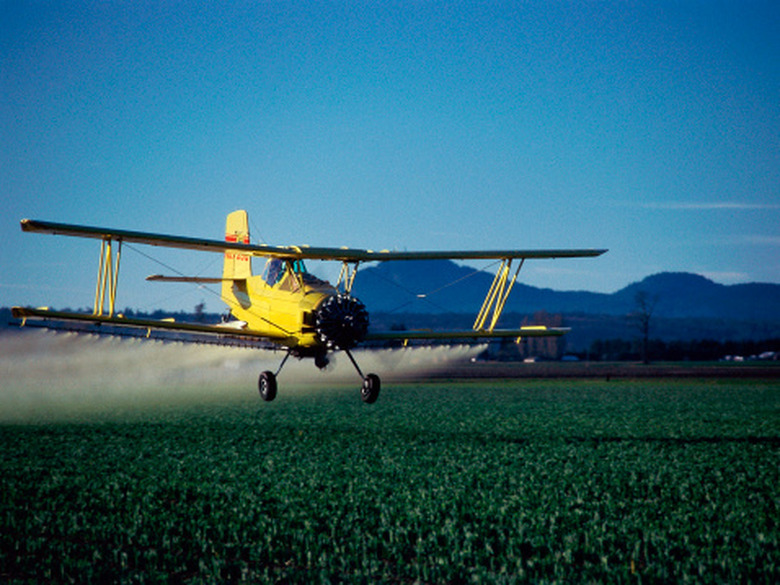Uses Of Recombinant DNA In Agriculture
Recombinant DNA changes the natural genetic makeup and the characteristics of an organism by inserting DNA from another organism. Also known as genetic engineering, recombinant DNA technology is widely used in agriculture to create genetically-modified organisms that produce genetically-modified crops. The first GM food was the Flavr Savr tomato, produced in 1994, which had a longer shelf life and an enhanced flavor. Since then, the number of GMOs has exploded as producers prefer them over traditional crops because they yield more and require less care.
Resistance to Herbicides
Resistance to Herbicides
Some GMO crops are resistant to herbicides. Introduction of a herbicide-resistant bacterial gene into plant DNA makes the plant resistant to that herbicide. Genetically-modified soybeans, corn, cotton, potatoes and wheat resist herbicides sprayed on farms to kill weeds. This has increased total yield of these crops as farmers use less toxic herbicides and do not need to spray as often as for traditional crops.
Insect and Viral Resistance
Bt is a safe and effective insecticide used in farming. Insertion of this toxin-producing gene from bacteria into the DNA of corn and cotton makes them resistant to some insects and protects them from disease. These crops require less spraying of the insecticide, as the plants produce the toxin to kill the insects themselves. Similar to herbicide- and insecticide-resistance crops, genetically-engineered plants resistant to diseases caused by viruses were developed. The papayas plants grown in Hawaii are resistant to attack by some viruses.
Other Recombinant DNA
Other Recombinant DNA
Research is ongoing to develop crops that are resistant to extreme temperatures, have increased nutritive value and crops that produce human vaccines or medicinal drugs.
Benefits of GMO
Benefits of GMO
GM foods make up a vast majority of the foods available in the market today. Recombinant DNA has increased the overall production of crops, as well as decreased the amounts of herbicides and insecticides used by farmers. This means that the farmers produce larger amounts of food while spending less time caring for the crop and paying less for insecticides and herbicides. Higher yields also benefit the consumer, as more food is available at lower prices. GM foods are the new normal.
References
- United States Department of Agriculture: The First Decade of Genetically Engineered Crops in the United States
- World Health Organization: Food Safety: 20 Questions on Genetically Modified Foods
- Human Genome Project Information: Genetically Modified Foods and Organisms
- Explore More: Genetic Engineering: Food- Crops
Cite This Article
MLA
Ph.D., Sukhsatej Batra,. "Uses Of Recombinant DNA In Agriculture" sciencing.com, https://www.sciencing.com/uses-recombinant-dna-agriculture-8383532/. 24 April 2017.
APA
Ph.D., Sukhsatej Batra,. (2017, April 24). Uses Of Recombinant DNA In Agriculture. sciencing.com. Retrieved from https://www.sciencing.com/uses-recombinant-dna-agriculture-8383532/
Chicago
Ph.D., Sukhsatej Batra,. Uses Of Recombinant DNA In Agriculture last modified August 30, 2022. https://www.sciencing.com/uses-recombinant-dna-agriculture-8383532/

